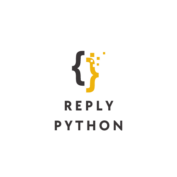 Python programming projects offer a dynamic way to enhance one’s coding skills while creating practical and innovative solutions. With Python’s versatility and user-friendly syntax, aspiring developers can embark on a journey of creativity and problem-solving. Whether it’s developing web applications, automating tasks, or diving into data analysis, Python projects provide a hands-on approach to mastering the language.
Python programming projects offer a dynamic way to enhance one’s coding skills while creating practical and innovative solutions. With Python’s versatility and user-friendly syntax, aspiring developers can embark on a journey of creativity and problem-solving. Whether it’s developing web applications, automating tasks, or diving into data analysis, Python projects provide a hands-on approach to mastering the language.
Exploring Python programming projects not only sharpens coding abilities but also fosters a deeper understanding of software development concepts. From building games to designing machine learning models, the possibilities with Python are vast and rewarding. Engaging in these projects allows individuals to apply theoretical knowledge to real-world scenarios, honing their expertise in a stimulating and productive manner.
Python Programming Projects
Python’s rise in the programming world has been meteoric. Known for its versatility and user-friendly syntax, Python stands out as a top choice for various development projects. Its adaptability across different domains such as web development, data science, and automation makes it a powerful tool for programmers.
Why Python Stands Out
Python’s simplicity and readability set it apart from other programming languages, attracting beginners and seasoned developers alike. Its large standard library provides ready-to-use modules for diverse functionalities, reducing development time significantly. Python’s community support is robust, with a wealth of resources, frameworks, and libraries available to assist programmers at every skill level.
Python’s Contribution to Modern Programming
Python has revolutionized modern programming by streamlining the development process and fostering innovation. Its clean and expressive syntax promotes code readability, leading to  efficient and maintainable software solutions. Python’s popularity in machine learning and data analysis has propelled it to the forefront of cutting-edge technology. Its presence in emerging fields such as artificial intelligence and cloud computing signifies its enduring relevance in shaping the future of software development.
efficient and maintainable software solutions. Python’s popularity in machine learning and data analysis has propelled it to the forefront of cutting-edge technology. Its presence in emerging fields such as artificial intelligence and cloud computing signifies its enduring relevance in shaping the future of software development.
Exploring Python Programming Projects
Python’s widespread adoption in diverse fields has made it a favorite among programmers for various projects. Understanding how to leverage Python for different applications can significantly enhance one’s coding skills and overall understanding of software development concepts.
Web Development with Python
In the realm of web development, Python shines through frameworks like Django and Flask. These tools empower developers to create robust web applications efficiently. Python’s clean syntax and vast libraries streamline the development process, making it a top choice for building dynamic websites and web services.
Data Science and Machine Learning Projects
Python’s popularity in data science and machine learning stems from its extensive libraries such as NumPy, Pandas, and TensorFlow. These libraries provide powerful tools for data manipulation, analysis, and model building. Python’s simplicity and readability make it ideal for implementing complex algorithms and handling large datasets effectively.
Key Tools and Libraries for Python Projects
Python projects utilize a range of tools and libraries that contribute to their success and efficiency. By leveraging popular frameworks and libraries, developers can streamline their workflow and access essential functionalities for diverse project requirements.
Popular Python Frameworks and Libraries
- Django: A high-level Python web framework known for its “batteries-included” philosophy, enabling rapid development of secure and scalable web applications.
 Flask: A lightweight and modular micro-framework ideally suited for small to medium-scale web applications, offering flexibility and simplicity for developers.
Flask: A lightweight and modular micro-framework ideally suited for small to medium-scale web applications, offering flexibility and simplicity for developers.- NumPy: A fundamental package for scientific computing in Python, providing support for large multi-dimensional arrays and matrices along with a collection of mathematical functions.
- Pandas: A versatile data manipulation tool built on top of NumPy, offering data structures and functions designed to make data analysis fast and easy in Python.
- TensorFlow: An open-source machine learning platform that facilitates the development and training of machine learning models with ease, focusing on simplicity and performance.
- PyCharm: A popular integrated development environment (IDE) for Python, offering a comprehensive set of tools for coding, debugging, and project management.
- Jupyter Notebook: An interactive web application that allows for creating and sharing documents containing live code, equations, visualizations, and narrative text.
- Virtualenv: A tool used to create isolated Python environments, ensuring project dependencies are maintained separately to avoid conflicts.
- Pip: The default package manager for Python, simplifying the process of installing and managing software packages written in Python.
- Git: A distributed version control system essential for tracking changes in the source code during software development, facilitating collaboration and code management.

